Euphorbia tirucalli: description and care at home
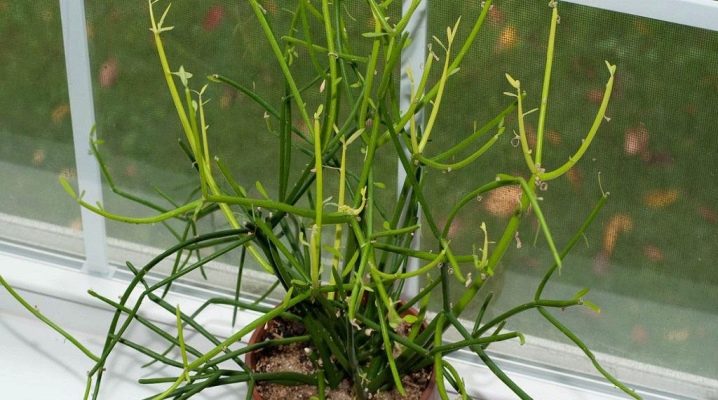
Euphorbia tirucalli is a rather unusual representative of succulents, practically not blooming at home, but reaching many meters in height. Its cultivation is carried out taking into account several important conditions.
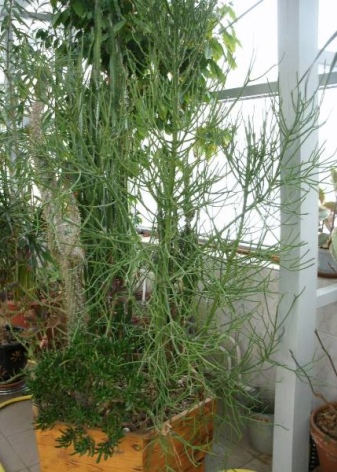
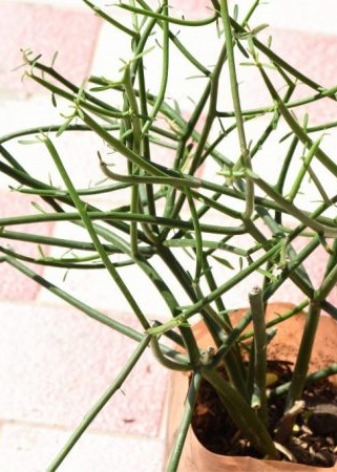
Peculiarities
Euphorbia tirucalli, whose second name sounds like euphorbia, is an absolutely unpretentious plant that grows in natural conditions even on the poorest soils. It is used industrially for the extraction of rubber. Euphorbia is a succulent, in the wild it can grow up to 9 meters. A plant slightly similar to a coral at home develops to a much smaller size - its height reaches 6 meters in the absence of regular pruning. The rubbery euphorbia has a smooth and round stem, colored either bright green or gray, depending on age. There is a large number of "twigs" on it.
The length of the linear leaves is 12 centimeters, but their width is much smaller - only 1.5 millimeters. In the off-season, they usually fall off, remaining only at the top. It is important to mention that the process of photosynthesis takes place without the participation of leaves - this is the task of the stem. As a rule, the older the plant, the less leaves it leaves.
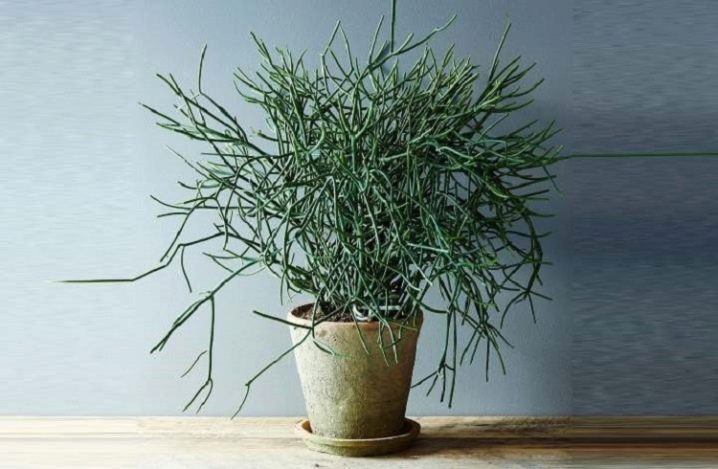
Euphorbia is a fairly bushy crop, which, together with the fleshy branches, makes the succulent attractive for interior decoration. In addition to the fact that there are several varieties of tirucalli in nature, experts continue to breed new varieties.
The milkweed flower has a small size and a beautiful yellow tint. However, at home, the plant very rarely blooms. The flowers are devoid of independent petals, since single inflorescences form a single umbrella. We must not forget that the succulent tirucalli is a poisonous plant, therefore, when working with it, it is imperative to protect the skin of the hands with gloves, and the face with a mask and glasses. If the juice gets on the skin, immediately rinse the body area under running water. It is more reasonable to place euphorbia where neither small children nor pets can reach it.

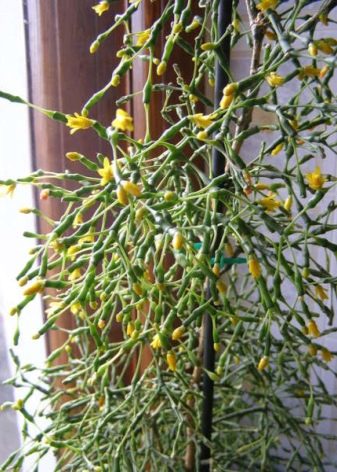
The most dangerous constituent of tirucalli is milky juice, which contains the toxic substance euphorbin. Once in the body of a living being, this element leads to intoxication, and leaves burns on the skin and mucous membranes.
If the juice gets on the mucous membrane of the eyes, then the person may even go blind.
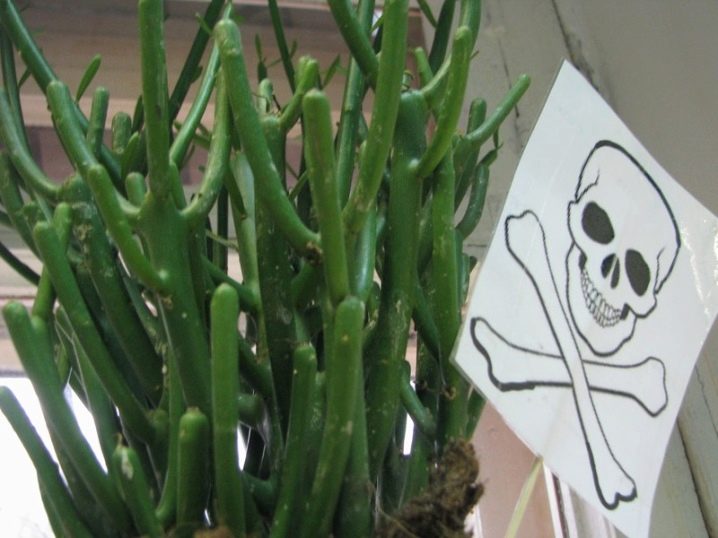
Conditions of detention
There are no special requirements for the conditions for keeping milkweed, but there are some nuances regarding the dormant period. At this time, the succulent should be placed in a room where the temperature ranges from 12 to 15 degrees. Higher or lower temperatures can cause certain problems and even death of the plant.
Temperature and humidity
The succulent is quite loyal to the low humidity in the room. Therefore, no additional action is required to increase this indicator. Even spraying can only be carried out for hygienic purposes. The same applies to rinsing under a warm shower. The optimum moisture index for milkweed ranges from 20% to 50%.
In addition, Euphorbia loves warmth, so the best temperature for it varies between 21-25 degrees Celsius.Ideally, during the day, the optimum temperature ranges from 21 to 23 degrees Celsius, but at night - from 15 to 18 degrees Celsius.
In the warm season, the plant can even be taken out into the open air. True, in this case, you will have to ensure that the succulent does not suffer from drafts or excessive rainfall.
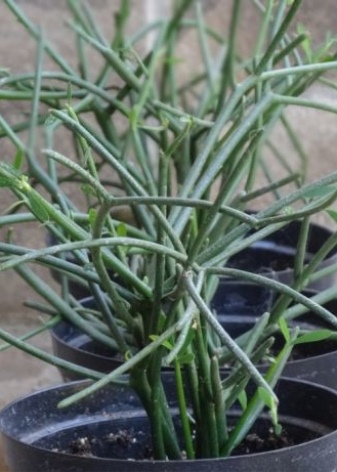

Accommodation
Although an unpretentious succulent plant can thrive in any conditions, it will thrive best on the sills of windows facing south. In addition, if the illumination is too low, then the plant will begin to stretch and lose its attractive appearance.
As for the substrate, experts recommend choosing a mixture of coarse sand, garden soil and leafy soil, taken in equal proportions. It is recommended to enrich the prepared soil with a small amount of charcoal. Of course, you can purchase a ready-made mix for succulents and cacti in the store. The consistency of the earth should be loose and airy, with a small amount of nutrients and with the inability to retain moisture.
The pot should be fairly wide and shallow, as the root system does not need to be recessed. It is worth taking a stable container with enough holes to drain the liquid. You should not choose too large a container if the plant itself does not differ in size. It will become very difficult for a small succulent to develop, and its root system may even undergo rotting. Gravel, expanded clay, crushed stone, pieces of brick and even vermiculite are suitable as drainage. An aesthetic solution would be to purchase a drainage in the form of balls.

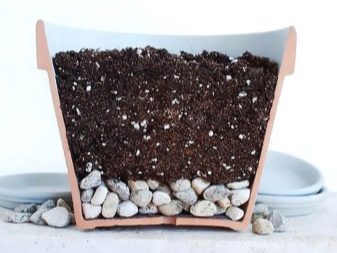
Transfer
Having brought spurge tirucalli from the store, you need to wait 10 days, and then start a transplant. To do this, it is enough to carefully remove the plant from the store container, shake off the roots and move it to a new substrate. A pot for permanent residence should be chosen a little larger than a shipping one. Since euphorbia suffers greatly from excess moisture, one should not forget about the drainage layer, which is easiest to form from pieces of brick.
In the future, it is recommended to move the succulent only if the roots grow strongly and begin to crawl out of the drainage holes.
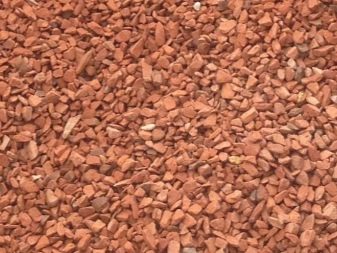
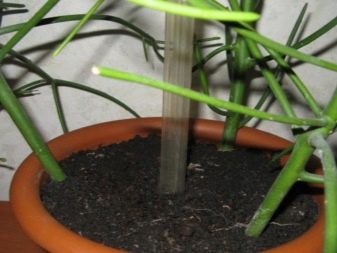
How to care?
Milkweed care at home is possible even for novice plant breeders.
Watering
Milkweed tirucalli does not require much moisture. While the vegetative period is underway and the plant is actively developing, irrigation is carried out after the earthen clod has dried to a depth of a couple of centimeters. If the plant is at rest, then you can limit watering to one or two times a month. Complete drying out of the soil, however, is not recommended. The water must first settle for several days, and be used either in a heated state up to 18-20 degrees, or at least at room temperature.
In order for the moisture to be distributed in the best possible way, experts advise to draw and slightly deepen several circles around the succulent trunk. The first should be 5 centimeters from the stem, the second 10 centimeters, and the third 5 centimeters from the walls of the pot. It is into these recesses that from 100 to 200 milliliters of liquid is poured, purified from heavy impurities.
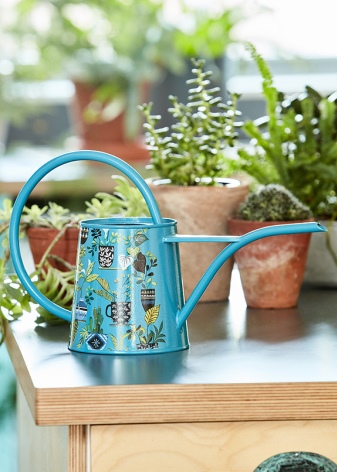
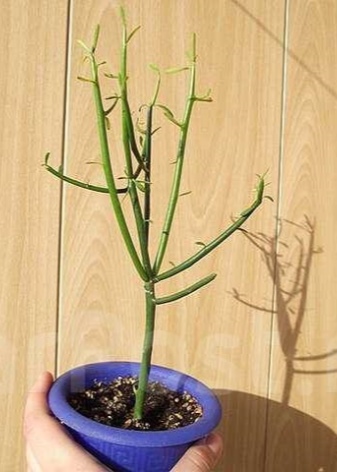
Top dressing
Fertilizers for milkweed are applied only in spring, while the plant is in a vegetative state. It is generally enough to make feeding once or a couple of times a season. The easiest way for this purpose is to purchase complex formulations in specialized stores, for example, liquid fertilizers for cacti.
Organic milkweed is not suitable - it is rich in nitrogen, and it leads to too accelerated development of the plant, which, in turn, contributes to the cracking of the stem and decay of the entire succulent.


Pruning
As spurge tirucalli develops very quickly and is capable of reaching excessive height, it must be pruned regularly. Using a sharpened knife, the upper zone of the shoots is eliminated. Cutting points must be processed with crushed activated carbon. The cut off parts, by the way, can be immediately used for grafting.
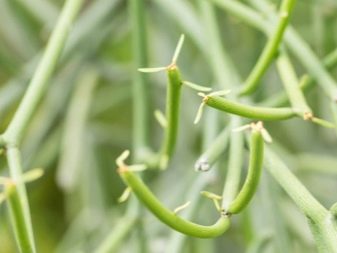
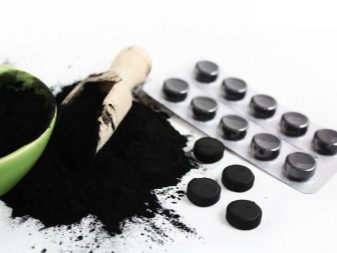
Reproduction
At home, propagation of this succulent can only be carried out by cuttings. First, with a sharp knife or scissors, previously disinfected, cuttings are cut in the apical zone of euphorbia. Then these fragments are dipped into warm water, where all the milky juice should go. For the next full day, the cuttings should be exposed to air. If desired, the cut can be treated with phytohormone or crushed coal powder.
Peat is poured into a temporary pot, on top of which washed coarse sand should be placed. The cuttings are placed in the substrate so that their tips reach the peat level. Plantings must be watered and kept in a warm, adequately lit room. Once the cuttings are rooted, they can be transplanted to their permanent habitat.
Some experts advise planting a couple of succulents in one pot so that the resulting bush is lush and beautiful.
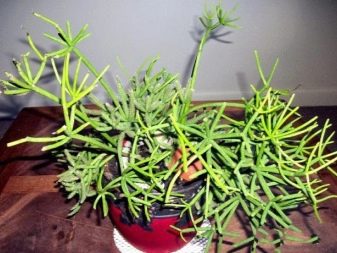
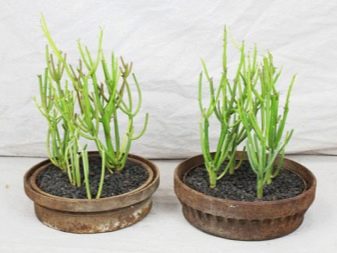
It is not forbidden to skip the water stage, but simply to stand the cuttings for a couple of days in the fresh air. After disembarking, it is worth additionally covering the plantings with a glass jar or a shortened plastic bottle for a better and faster appearance of roots due to the greenhouse effect.
It is worth mentioning that in nature (and extremely rarely in indoor conditions), euphorbia can also be propagated by the stem. With sufficient length, the dangling process can, upon reaching the ground, produce roots.
Diseases and pests
As a rule, milkweed diseases are manifested due to improper care of the plant. Rotting roots are the result of overly moist soil. It is not difficult to correct the situation in this case - you will have to transplant the succulent into another pot with new soil, after carefully getting rid of the decayed parts. The brown shade of the stem signals the hypothermia of the bush. Unfortunately, if the stem has changed color, most likely, it will not be possible to save it. Yellowing leaves appear with excessive exposure to sunlight. In this case, you will have to think about darkening the landings.
Of the pests, euphorbia is most often attacked by mealybugs and spider mites. In the first case, it will be enough to take a soft cloth, soak it with alcohol and use it to wipe the leaves covered with whitish fluff.
In the second case, you will have to use special chemicals.

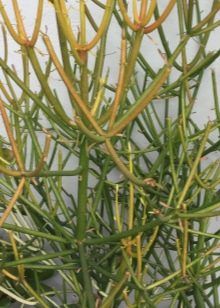
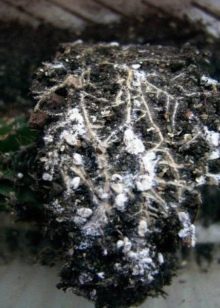
To get rid of pests, you can use a single algorithm. First of all, all insects are mechanically eliminated, and the affected areas are wiped with a sponge soaked in soapy water. Next, the bush is sprayed with a solution of tobacco, garlic or green soap. Typically, 5 to 8 grams of the substance is used per liter of water. Usually, this procedure has to be carried out 3 times, at intervals throughout the week. In case of severe damage, you will have to use insecticides applied once every 2 weeks.
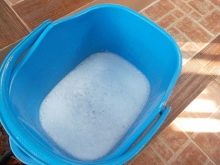


See the next video about the care of the milkweed "Tirucalli"























































The comment was sent successfully.